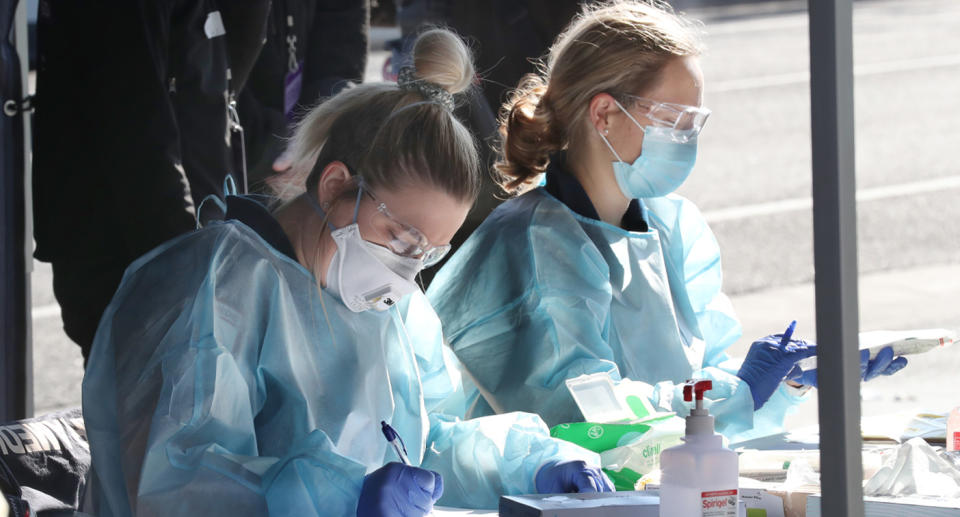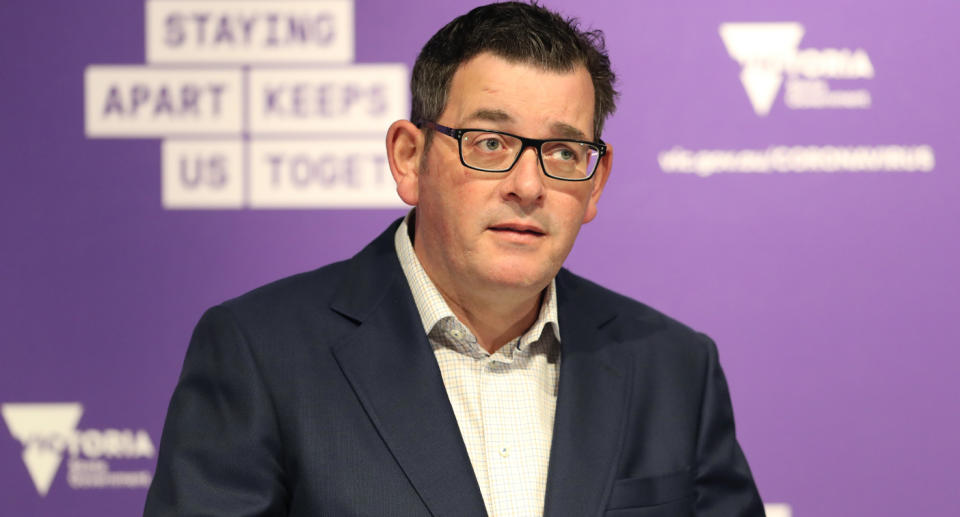The normally 'innocent' acts that led to Victoria's coronavirus outbreaks
Victorians engaging in routine acts that are normally “innocent” may have been the source of coronavirus outbreaks in the state, the premier has revealed.
The sharing of cigarette lighters between people in close contact may have led to one of Melbourne’s clusters of the deadly disease as the state continues to record worrying daily increases.
Addressing media on Sunday, Premier Daniel Andrews said the virus being transmitted by simply touching the same item was a clear example of the “wildly infectious” nature of COVID-19.
“To the best of our knowledge, we believe that some of those cases may well have come from people sharing a cigarette lighter. Keeping their distance, but ultimately, sharing a lighter,” he said.
“One between the other. Not a wilful breach of anything, but one of those things where an apparently innocent thing can lead to transmitting the virus. That is how wildly infectious this is.”

Additionally, Mr Andrews said health officials suspected people riding in a car with an infectious person without knowing may have also led to a coronavirus cluster.
“You can never be certain, but there also seems to be some likelihood that some carpooling arrangements between staff may well have meant that they were in closer contact than you would like,” he told reporters.
The premier said such cases represented the fact it was impossible to “deliver a risk-free model” when it came to fighting COVID-19.
A total of 49 new cases were recorded on Sunday, including just four linked to known outbreaks like the one at a Coles distribution centre in Laverton, where four people have now tested positive.
Deputy Chief Medical Officer Professor Michael Kidd addressed the nation on Sunday, expressing the numbers of COVID-19 cases being recorded daily in Victoria was “a matter of genuine concern”.
He told reporters that of the 53 new cases in Australia, three were people in hotel quarantine in NSW, one Western Australian hotel quarantine and 49 cases in Victoria.

Eleven people are in hospital across the country while there is one person in intensive care, Prof Kidd said.
He pleaded with Australians to not behave as though the pandemic is over, revealing many of the current cases were in healthy young people.
Nightclub 'superspreader' leads to several infections and 300 people isolated
Family's surprise party photo before 18 people diagnosed with virus
Woman and 15 friends infected with coronavirus after pub outing
“This pandemic is not over. Unlike the outbreaks we saw related to cruise ships and residential aged care facilities earlier in the pandemic, many of the people who have been infected so far in the outbreaks in Melbourne are well young people, often with only mild symptoms,” he said.
“You may not get sick or very sick if you become infected with COVID-19, but if you pass the infection onto your parents or your grandparents they could become very unwell, they could even die.”
‘This is not a second wave’
Prof Kidd assured Australians figures did not constitute a “second wave”, explaining it was correct to refer to current clusters of cases in Victoria as outbreaks.
“This is not a second wave and we hope that we do not come to the position of having a second wave of infections occurring within Australia,” he said.
An immediate increase in testing, activation of contact tracing and rapid action to get people into isolation was the reason a notable increase in positive cases had been detected, Prof Kidd said.
“So this is not a second wave. This is an outbreak occurring in the response which is occurring is very vigorous and appropriate,” he said.

When pressed on what a second wave would look like if it was to occur in Australia, he said it would be incredibly high rates of infection, similar to what was observed during the Spanish flu pandemic.
He said in that case, there “was a wave which went right across the world with further very high rates of infection and very high rates of mortality occurring”.
“Of course, that's not what we are seeing [in Australia] at this time,” Prof Kidd said.
More than 10 million COVID-19 cases worldwide
Global coronavirus cases have now exceeded 10 million, according to a Reuters tally, with almost half a million people killed by the disease in the past seven months.
The figure reached on Sunday is roughly double the number of severe influenza illnesses recorded annually, according to the World Health Organisation.
The milestone comes as many hard-hit countries are easing lockdowns while making extensive alterations to work and social life that could last for a year or more until a vaccine is available.
Some countries are experiencing a resurgence in infections, leading authorities to partially reinstate lockdowns, in what experts say could be a recurring pattern in the coming months and into 2021.
Do you have a story tip? Email: newsroomau@yahoonews.com.
You can also follow us on Facebook, Instagram and Twitter and download the Yahoo News app from the App Store or Google Play.



